




by Dan Radebaugh
Judging by our recent meetings, the increased attendance at our meetings since moving to the Alley Pond Environmental Center seems to be both real and ongoing! Well, the more the merrier! More chances to meet new and interesting people, more fish for our auctions, and more interest and input from our members! Itʼs great to see all of you!
This issue of Modern Aquarium covers a lot of ground! Something old, something new, maybe even something a little bit different!
I think most of you have noticed Marsha Radebaughʼs recent series that weʼre calling Who Are We? See page 14 in this issue for an introduction to Greater City member Ron Webb! I would also like to point out the tremendous contributions to this magazine over the years by Steve Sica. Be sure and see Steveʼs latest fishkeeping article, “Ten More Gallons,ˮ on page 7! Believe me, having Steveʼs consistently wonderful articles over the
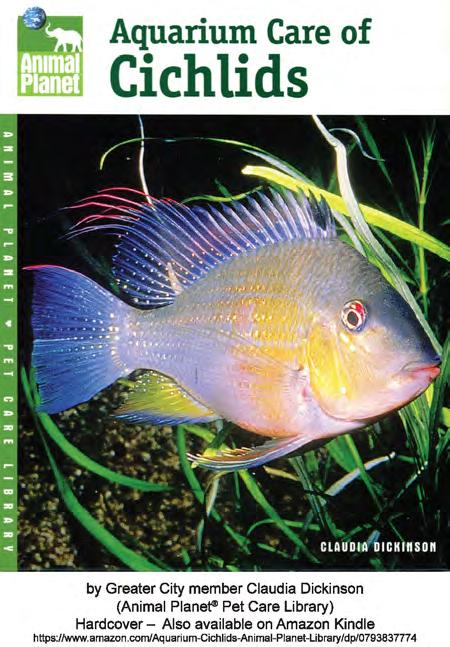

years has been a godsend to me, and to others before me. Thanks, Steve! Do keep up the great work!
Iʼd also like to welcome a new contributor to Modern Aquarium, Donna Ansari! Donna has also been part of our team of proofreaders, but if you look at her artwork (page 22) youʼll see that she has other talents as well! I am also indebted to Tom Warns, who in addition to writing top-notch articles has been active as a proofreader, as have Donna Sica, Marsha Radebaugh and Joe Ferdenzi. Believe me, I couldn't do this job without such great help!
Modern Aquarium is produced by and for the members of the Greater City Aquarium Society. You, our members, are our authors, and with ten issues per year, we always, always need more articles. I know that many of you are keeping and/or breeding fish that I and others would like to know more about. So tell us about them! If you’re a little unsure about the state of your writing technique, don’t worry― that’s why editors were invented!
So if you have an article, photo, or drawing that you’d like to submit for inclusion in Modern Aquarium, it’s easy to do! Just fax it to me at (877) 299-0522, email it to gcas@ earthlink.net, or just hand it to me at a meeting. However you get it to me, I’ll be delighted to receive it! Enjoy!

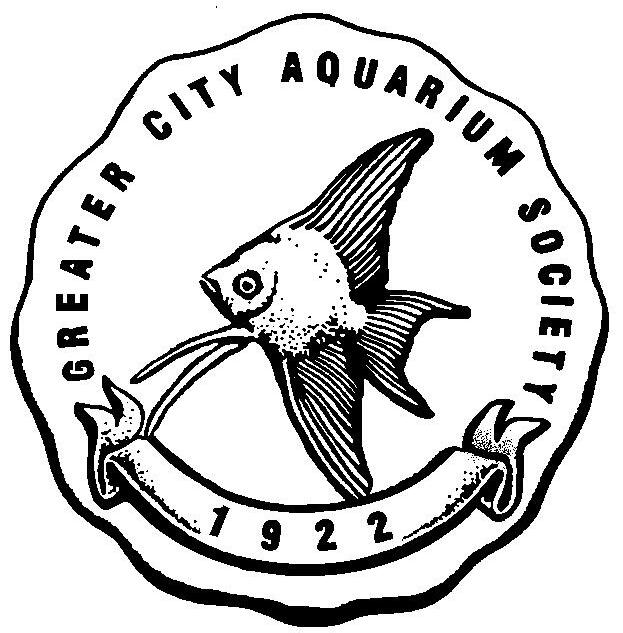
March 5
April 2
May 7
Breeder Boxes
Natural Aquariums, Part 1
Natural Aquariums, Part 2
June 4 Guppies
July 2
The Balanced Aquarium
August 6 Night At The Auction
September 3
October 1
November 5
December 3
Holiday Awards Dinner!
Articles submitted for consideration in Modern Aquarium (ISSN 2150-0940) must be received no later than the 10th day of the month prior to the month of publication. Please email submissions to gcas@ earthlink.net, or fax to (347) 379-4984. Copyright 2025 by the Greater City Aquarium Society Inc., a not-for-profit New York State corporation. All rights reserved. Not-for-profit aquarium societies are hereby granted permission to reproduce articles and illustrations from this publication, unless the article indicates that the copyrights have been retained by the author, and provided reprints indicate source, and that two copies of the publication are sent to the Exchange Editor of this magazine (one copy if sent electronically). For online-only publications, copies may be sent via email to gcas@ earthlink.net. Any other reproduction or commercial use of the material in this publication is prohibited without prior express written permission.
The Greater City Aquarium Society meets every month except January and February. Members receive notice of meetings in the mail or by email. For more information, contact: Dan Radebaugh at (718) 458-8437, email to gcas@earthlink.net, or fax to (347) 379-4984. For more information about our club or to see previous issues of Modern Aquarium, you can also go to our Internet Home Page at http:// www.greatercity.net, http://www.greatercity.org, or http://www.greatercity.com.
by Warren Feuer
Do you have what you want? Don’t get me wrong, I am not talking about what you’d have if you won Mega Millions or Power Ball and had absolutely no limit on what you could get. No, I am talking about identifying and reaching your attainable goals. Allow me to provide some examples. I go to a local gym several times a week, and am always fascinated by the folks who work out and never seem happy with their muscle size and/or definition and are frequently checking how they look in the gym’s mirrors, often seeming to frown at what the mirrors reflect. Or, continue to push themselves on the various running, climbing, cycling weightbased options there, clearly exhausted but pushing further. I can identify. When I was younger, I was always looking for that extra rep at the gym or extra minute or two pushing my stamina limits. The result? I eventually injured myself, not once but twice, and had to dial back my workouts.

In my business life, I was always looking to move upward and find a better opportunity, as defined by a higher level and better compensation. Eventually I landed in a position that was ideal; I had a very nice compensation package, a respectable level of position, responsibility, authority and was working on a state-of-the-art system that changed how commodities were traded. I was recognized nationally as an authority on this novel technology, and I was sought after to speak across the country. Still, I wanted more. I took a position at a competitor, with a considerable increase in compensation and title, and probably bit off more than I could chew. The result? I was let go at the job after a significant failure that was a result of a miscalculation on my part. I came crashing down to earth and had to start over.
My experience in the hobby world has followed a similar path. When I lived in an apartment in Forest Hills, I had 11 tanks in my 2-bedroom apartment, and I wanted a dedicated fish room. When we bought a house in Long Island, I turned the basement into my fish room. Eventually I had over 30 tanks set up down there, and spent as much free time as I could taking care of the fish, waking up early on weekends for water changes, and all other maintenance. Then I got sick and found it harder and harder to take care of all the tanks. You can guess what happened I could not perform tank maintenance as frequently and regularly as I had been. I’ve since reduced my tank count and have been able to return to a more frequent and regular maintenance schedule. Fortunately, the fish I’m keeping did not suffer due to my maintenance decrease, but I suspect it was just a matter of time until they did.
On the society side of the hobby, I ran all over the place, attending as many conventions and club meetings as I could. I was looking for acceptance and recognition from the icons of the hobby. Now, of course, I realize how little that all means, but at the time, it was something I sought. I never reached my goal, whatever that was, because I didn’t really know what I was looking for, and after a while, I realized that I was looking for something I’d never attain. These days, I am very happy with my place in the hobby. Hey, I’m the President of GCAS, and that’s pretty great!
My point in all this is, as I watch the gym attendees pump and pose, I wonder if any of them will ever get what they want, whatever that is. Most of them are in pretty good shape already and quite a few of them have reached a level that almost all of us would be very happy with. And yet, they seem unsatisfied, checking their progress in the gym’s mirrors and often visibly unsatisfied. And, while it’s likely that they have reached their current levels by not being satisfied and working harder, there’s a limit to what can be accomplished as well as the cost to obtain those goals.
I have visited many fish rooms, and many in content and condition that completely minimize what I have set up. However, I realize my own limits in how much time and resources I want to devote to my fish and what the trade-offs are, and I am completely satisfied with what I have. Well, maybe not completely satisfied. But that’s my nature. As you can probably guess, I am a Type A person and have always been fairly ambitious. It’s brought me success and I am glad that, at this point, I have learned to temper my ambition and not suffocate it. I believe that there’s nothing wrong with ambition as long as it’s managed and not allowed to run wild. As an example of this, my dear late friend Victor Becker (who by the way introduced me to GCAS way back in 1992) always wanted to own a house and have a fish room. However, he was never able to purchase a house and lived in an apartment his whole life. Once his children moved out of the apartment, he turned their bedroom into a fish room and was completely satisfied with what he had. He never complained about his limits in keeping fish and enjoyed what he had.
As you consider your wants and needs, specifically as it pertains to our hobby, make sure your goals are in line with what’s possible. Take it from me, overreaching is not worth it and satisfaction and happiness are best measured in setting realistic goals and achieving them.

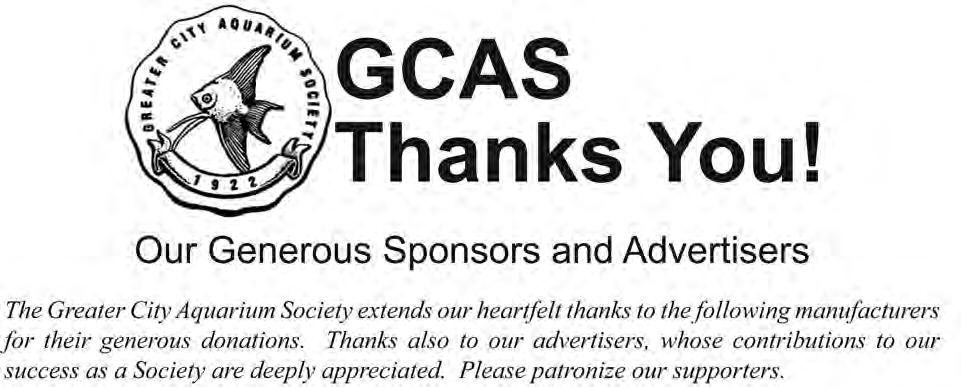
Advanced Marine Aquatics
Al’s Aquatic Services, Inc.
Amazonas Magazine
Aquarium Pharmaceuticals
Aquarium Technology Inc.
Aqueon
Brine Shrimp Direct
Carib Sea
Cobalt Aquatics
Coralife
Ecological Laboratories
Fishworld
Florida Aquatic Nurseries
Franklin Pet Center Inc
Fritz Aquatics
HBH Pet Products
High Quality Exotic Goldfish
Hydor USA
Jehmco
Jungle Bob Enterprises
Jungle Labs
Kent Marine
KHC Aquarium
Kissena Aquarium
Marineland
Microbe Lift
ModernAquarium.com
Monster Aquarium, Inc.
Nature’s Reef & Reptile
NorthFin Premium Fish Food
Ocean Nutrition America
Oceanic
Omega Sea
Pacific Aquarium, Inc.
Penn Plax
Pets Warehouse
Pet Resources
Rolf C. Hagen
San Francisco Bay Brand
Seachem
Spectrum Brands
Your Fish Stuff.com
Zoo Med Laboratories Inc.
Story and Photos by Stephen Sica
My wife proof read this piece and told me that it was disjointed. Since she, as a retired lawyer, is much smarter than I am, I did a brief partial rewrite, so if this story doesn’t make much sense, I present it as a series of thoughts about my fish. You probably understand that if you have had one hobby for a certain number of years, your mind may eventually begin to flutter all over the place. Mine certainly does.
When I was a child, I used to think that any young person who was interested in fishkeeping would start with either a goldfish bowl or a ten gallon fish tank full of guppies. Today, you can probably replace either the bowl or tank, or both, with a betta fish setup. Better yet, just add the betta setup to the other two and have three choices for beginners.
fish knowledge and she happily left just after midnight.

I currently have four ten gallon aquariums. This is nothing special except I decided to write a story about how I came to have the fourth tank. First, one tank sits in the den with eleven or twelve black neon tetras and two trapdoor snails. A betta was formerly the thirteenth fish, but it aged and passed away the day before I began this article. He was hardly eating or swimming around. He mostly slept on his betta leaf near the surface. I did my best to take good care of him. I hope that he had a good life.
My first thoughts were to replace him with a small school of tetras or similar. The current inhabitants mostly prefer to lie low if anyone should gaze into the tank. A few days before the betta passed, a New Year�s Eve visitor recognized the sleeping betta on his artificial leaf, but insisted that the tetras were guppies. She did enjoy the betta leaf concept. I told her that her “guppy-tetras” liked to stay out of sight despite my displaying their tank in a prominent location. I thanked her for her astute tropical
I decided to lie low before replacing, or not, the betta. I do not give fish names, although Donna will, but the betta was a favorite. I would sit on the sofa close to him and often gaze at him while trying to stay awake while the TV was on. If I looked at the tetras, they would swim away and hide near two large rocks. I occasionally tried to photograph them to recall what they looked like. The remaining three ten gallon fish tanks are in my basement. For years one was a plant nursery, until two tiny fish appeared. I suppose plants that I purchased at GCAS auctions came with fish eggs. One fish grew into an Emperor tetra but the other still is a mystery to me. The second fish looks similar to a Clown loach. It’s probably a cichlid of some sort, but I am no expert on this species.
The next ten gallon tank is actually a home for a few guppies and four Corydoras aeneus catfish, plus a few more trapdoor snails, and lots of moss and fern plants. I had no plans to have a fourth ten gallon aquarium, so it must have been fate.
On a summer day in July 2024 I decided to inspect two LED fixtures on the top of a storage shelf in my basement. The fixtures were above my head, so I never paid them any heed until that fateful day. The larger light fixture was in a box so I could tell most details about it easily. The smaller fixture was thoroughly entwined in bubble wrap. I grabbed it down, sat on a chair and began to unwrap it. The small LED light fixture soon turned into a glass top for a ten gallon tank. I think it was the Perfecto brand name. No wonder it was securely bubble wrapped! I guess that I decided that an extra glass top might come in handy someday. I probably bought it at a good price. →
Two weeks later I was sitting in the back of the room for the August GCAS auction-only meeting. Joe Ferdenzi, spelling Ed Vukich, offered for auction a wrought iron ten gallon tank stand for ten dollars. No one seemed to be interested, so I shot up my left hand and bought it. You cannot buy any size tank stand for a reasonable price nowadays. I bought it because the price was good. Now I had a stand and glass top for a ten gallon tank.
Another month or so went by and I was in the Riverhead PetSmart. The store was having one of its recurring tank sales. A ten gallon tank was fifteen dollars, so I bought one. Again, it was a good price. I took the tank home and placed it on the stand. I shifted the ten gallon plant tank a few inches to the right and added the new tank under a small basement window right in front of an electrical outlet. A perfect fit. Plus, it seemed that it was meant to be.
Like most aquarists I have boxes full of stuff; you know, miscellaneous items and spare parts, such as heaters, filters, tubing. I decided to place a small triangular sponge filter in the rear corner of the tank. I added a fifty watt submersible heater�the type that has its temperature control on the electrical cord section that is out of water. I like these for this very reason, because these newer models enable a person to adjust the temperature easily and keep dry hands. It sure is easier to operate. The tubes are usually shorter, too. Personally, I doubt if the temperature is any more accurate than earlier heaters with the adjustment knob on top of the submersed tube.
Finally, the tank needed light. I have spares in various types of light fixtures but I wanted to use one with a fluorescent tube. I got out my twenty inch T-8 classic stainless metal fixture


made for ten gallon tanks. I had purchased it at a GCAS auction many years ago. It still worked, but the original wiring was hazardous so I quickly put it away. I think that I paid ten dollars; I must have thought that it was a good price at the time. Fortunately, I have the same fixture in a modern black plastic design. It is my only spare “traditional” fluorescent fixture for a ten gallon tank, so it came in very handy. The light cast by a single T-8 tube is not very bright in my view, but it was the perfect match. I leisurely assembled the tank and accessories in my spare time, and added water, large gravel stones and a few large anubias barteri with broad leaves. I used black thread to attach three of the plants to a small piece of driftwood. I placed these in the center rear of the tank; everything looked good to me. I added some java moss and ferns to fill the tank up with plants.
I had no thoughts of adding fish, but by the time I finished writing this several months had passed, so the tank currently contains more trapdoor snails, a pair of young green swordtails that I bought at the now closed Pets Warehouse in Carle Place, a very young female betta that I purchased at Petco in Riverhead, and ten mystery (to me) fish fry that I purchased at a GCAS auction last year. I already had the snails and I feel that I purchased the other inhabitants at a reasonable price. A few months later, every occupant is alive and well so I am pleased. This is what always matters most in the end!

by Deborah Weisberg
Pittsburgh – It appears that someone did a stocking of their own at the newly refurbished Glad Run Lake in Butler County, upsetting the ecosystem with an unwanted invasive.

Pennsylvania Fish & Boat Commission biologists were stunned to discover Western Mosquitofish – a small but voracious nonnative prey species never before documented in Pennsylvania – during a an electrofishing demonstration for a Glad Run Conservancy event in early October.
Drained for a $4 million dam reconstruction in 2011, Glade Run lake has been catch-andrelease-only since it was refilled and stocked with largemouth bass, bluegills, and other species in 2017, and will be regulated for harvest as of January 1.
“We found hundreds – maybe thousands –of this fish we’d never seen before,” said an area fisheries manager Tim Wilson. “We collected some and brought them back to the lab to be looked at under a dissecting microscope, and ID’d them.”
“Western Mosquitofish are native to the Mississippi Drainage but not Pennsylvania and so they obviously didn’t get there on their own. We suspect they were illegally introduced to the lake with a bait bucket.”
Western Mosquitofish are a live-bearing species that grow to about 2 inches and can survive in harsh environments with limited oxygen. They can be purchased from Amazon and some pet supply retailers and are marketed as effective at controlling aquatic insect larvae and algae in backyard ponds and aquariums.
Its cousin the eastern mosquitofish is native to the Delaware and lower Susquehanna rivers, but has been illegally introduced outside of its indigenous range, said Sean Hartzell, the
commission’s aquatic invasive species coordinator.
“It’s too soon to know the full impact of either species because neither one has been that well studied. They are forage for sportfish, but they are feeding on the plankton community and competing with larval fish and juvenile pan fish for food resources.”
“A major concern,” he said, “is that anglers will continue to introduce both the eastern and the Western Mosquitofish where they don’t belong.”
“The Western Mosquitofish is among about 60 invasive aquatic animals of greatest concern in Pennsylvania, and putting them into any commonwealth water is unlawful,” said Hartzell.
“As of January 1 of this year, we adopted stricter regulations aimed at controlling the spread of invasive species. You can’t release any bait fish that isn’t on a hook into any commonwealth water; can’t dump bait buckets into commonwealth waters.”
“The new regulations strengthen existing regulations that prevent people from taking a fish from one lake or stream and releasing it anywhere else,” he said.
“When snakeheads, for example, were first documented in the Delaware and Susquehanna watersheds over a decade ago there was concern about how they would affect other fish communities, but data now suggests that although they are widespread they may be less impactful than originally anticipated,” Hartzell said, noting that it can take time to assess the effects of any invasive on a fishery.
A recent survey of Lake LeBoeuf in Erie County turned up white perch, a native to southeastern Pennsylvania waters but considered invasive in the western part of the state. At LeBoeuf, they join another and more worrisome invasive – the round gobies. “White perch are
This article appeared in the January, 2025 issue of the Aquarium Club of Lancaster County’s publication Tank Tales
probably hurting the white bass population by over competing it for habitat and food, but they’re a relatively recent introduction, so we’ll come back in 10 years and see,” said Hartzell.
“Round gobies were first documented in LeBoeuf 10 years ago and I’m losing more sleep over them.”
“White perch have shown up in other western Pennsylvania fisheries, including Lake Erie and Pymatuning Reservoir, where they are growing in abundance,” said Wilson. “We first sampled them in Pymatuning five years ago and this year we saw a ton.”
“In Erie they reach a quality size. In Pymatuning they have been surveyed at 6 to 7 inches or less and they are growing in abundance. We first caught them in surveys five years ago and this year we saw a ton.”
“In some waters white perch show a tendency to stunt,” he said. “Quite often, they so over-produce that they inhibit their own growth through over-abundance. They compete with natives and more desirable species like bluegills and crappies.”
“White perch are nest raiders and egg predators, and consume other fish,” Wilson said. “If they can get it into their mouth they will probably eat it.”
“Besides stricter regulations around keeping non-natives out of commonwealth waters, the commission has focused on public education and monitoring.” Said Hartzrell, who notes that the Governor’s Invasive Species Council is the nexus in an effort involving many partners, including Pennsylvania Sea Grant.
“Although it can be a little hard to measure, we’ve had some success. We’ve gained a lot more traction in the past for years, and we are getting a lot more reports of invasives from the public because of greater awareness.”

Source:
Reprinted with permission from: Pennsylvania Outdoor News, November 22, 2024, Volume 21, No. 24

Zebrafish protein unlocks dormant genes for heart repair

More medical marvels from the Zebrafish (Danio rerio)! Researchers have successfully repaired damaged mouse hearts using a protein from zebrafish. They discovered that the protein Hmga1 plays a key role in heart regeneration in zebrafish. In mice, this protein was able to restore the heart by activating dormant repair genes without causing side effects, such as heart enlargement. This study marks an important step toward regenerative therapies to prevent heart failure.

Photo from Wikipedia https://www.sciencedaily.com/releases/2025/01/250102162650.htm?utm_source=substack&utm_medium=email

Za made seven collecting trips to South America. The book devotes 77 of its 207 pages of text to these trips and is peppered with interesting stories. Not enjoyable was the constant oppressive heat, humidity and mosquitoes experienced in the Amazon and Venezuela. One thing he found out during these trips is that fish with vivid colors in the wild often lose this coloration in aquariums.
He relates the story of a fellow collector who was bitten in the ankle by a piranha. There was not much loss of blood, but the wound was deep and difficult to treat, and it took two weeks before the person was able to get out of bed.
For his second trip to Brazil, Za was the first person to bring back Cynolebias constanciae. He financed his third trip to Brazil by selling pairs of C. constanciae to members of the American Killifish Association, kicking back $5 of the sale price to the AKA. His article introducing the fish to hobbyists appeared in the July 1980 Freshwater and Marine Aquarium magazine.
Not all memories of his collecting trips were pleasant. A competitor of one of Za’s collecting companions filed a complaint that the collector assisted Za in taking rare and protected fish out of the country. While a judge dismissed the claim, Za, who had been corresponding with the accuser for years, was very upset: “His betrayal was quite unsettling.”
I found Za’s story of his move to another house interesting. The old house was too big and expensive to heat. He moved the aquariums a few at a time to the new house. The fishroom of the new house was unheated, but his friend and neighbor George Fear gave him a baseboard heating system that he no longer needed. The new house depended on well water which was acidic with high CO2 and bacteria. Za incurred the death of some valuable fish as a result. Furthermore, the well could not maintain the necessary pressure and flow. In the end, Za paid to have city water piped to his house.

Look carefully and you’ll find loads of interesting tidbits throughout the book. For instance, Za believes that sediment that eventually collects in water heaters can turn the water toxic to fish, so he recommends regular flushing of the hot water tank. He has had great luck with growing philodendron above fish tanks and allowing the roots of the plant to consume nutrients in the water. Za enjoys sketching fish and includes some examples in the book.
I especially related to RL’s many recollections of “the good ole days.” We old-timers remember the days when there were numerous local fish stores: “During the 50’s and 60’s there were many wonderful fish stores in the area, and I devoted Saturdays to visiting stores and wholesale establishments.” When he spoke at the Brooklyn Aquarium Society in the early 1970s, “the society always had a wonderful turnout at their monthly meetings, and it wasn’t unusual to have more than 150 people in attendance.” Wow!
Za started keeping a guestbook for his fishroom in 1962, and at the time of his writing, the book has 532 names of aquarists from all over the world. Throughout the book he talks about aquarists he has met over the years, including Ross Socolof, Paul Spiece of “Guppies to Groupers” fame, George Fear, well-known aquarist and importer from New Jersey; Don Dewey, founder and editor of Freshwater and Marine Aquarium magazine, Charlie Grimes, a much-in-demand convention speaker known for his humorous presentations; and Ray “Kingfish” Lucas.
An Aquarist’s Journey is not only written in an easily-accessible style, it is also loaded with photos, all from Za’s collection: 322 color and 49 black and white (yes, I counted them). The book is fully indexed and includes a list of 54 of Za’s articles. I strongly recommend this book and applaud the Greater City Aquarium Society for ensuring that it got written and published!

veteran police officer now retired, Ron was still that single tank kind of guy. But he used to pass a neighbor’s home around the corner and admire a beautiful tank on display in the window and wonder about the tank and it’s owner. Then one day at a neighborhood celebration, he met him! It was none other than our very own Vice President and auctioneer extraordinaire, Ed Vukich! Ed showed Ron his fish room, expanded Ron’s interest in the hobby, and as Ron puts it, “elevated his fish keeping.” He also introduced him to Greater City Aquarium Society!
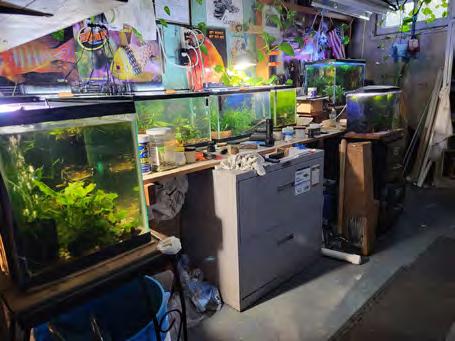

You can guess the rest. That was about 10 years ago, and Ron has graduated to 13 tanks, keeping Koi Angels, assorted guppies, red cherry, blue dream, and orange sunkist shrimp, assorted mollies, green, albino, and black cories, as well as breeding groups of super red Ancistrus. His home office now doubles as his fish room. He also maintains 4 outside 40 and 20 gallon tubs with white clouds, rainbows, catfish, and water lilies. Like so many of our members, Ron also belongs to the Nassau County and the Long Island Aquarium Societies. Ron says, “fish, and fish keeping is sort of what I do.” He also enjoys fishing, doing so in a local pond in waders March through November. Of course that’s not all he does. He’s been in sales his entire working life, starting with a paper route at age 10 and working for Pitney Bowes since 1993. But it looks like retirement might not be that far off for Ron, and we know what he’ll be spending a lot of time doing. That’s right – fishing! – in more ways than one!













The following pages from page 20 to page 20 originally appeared in the April, 2006

































































































by Diana Walstad
Author’s Introduction
This book is not the usual compilation of reproductive modes of various fish taxa, with a brief summary summary for each. And unlike many aquarium books, it is not targeted for beginners operating at a middle-school level. Rather it is written at the advanced high school or college level. It delves into scientific studies on behaviour, inbreeding, outbreeding, and evolution, often―but not always―using the guppy.

Much has been discovered about fish reproduction since the 1870s, hobbyists should be prepared for some challenging reading, especially in chapters VI (‘Cryptic Female Choiceʼ) and VII (ʻEvolutionʼ). Earlier chapters build the ground work for these two advanced chapters. Chapters on inbreeding, outcrossing, and evolution would apply to all fish types. Final two chapters are more traditional, describing classical genetics, common breeding practices, and just basic tips on keeping and breeding guppies and other livebearers.
New scientific methods such as genotyping and artificial insemination of sperm mixes have pried open many secrets of fish reproduction.
Offspring paternity can now be determined accurately, thereby revealing subtle fertilization biases against inbreeding, hybridization, etc. Behavioral studies reveal that individual fish will often copy the mate choice of another individual, especially one that has “influencerˮ status. I trust that all fish species, upon closer examination, will reveal their special secrets and peculiarities.
The book also introduces scientific thinking to readers that are not scientists. Rather than merely spoon feed experimental conclusions to readers, I describe how investigators set up and conducted their experiments and how they analyzed their results. These career professionals have accumulated deep knowledge and experience, but their work has not filtered down to aquarium hobbyists. This book brings some of their work to light.
To make the science understandable, I have eliminated as much scientific jargon as possible. I have unified multiple terms that often say the same thing. I have boiled down and tried to make sense of stupifying statistical data without losing a studyʼs main points. My intent is to introduce fish lovers to some important 21st century concepts in fish reproduction.
The more we learn about the genetics and the behavioral aspects of fish reproduction, the better we will be as fish breeders. Along the journey, I have included my own experiences breeding guppies that may prove useful to hobbyists. Hopefully, this book will increase reader satisfaction in keeping and breeding aquatium fish.

Diana Walstad, a long-time aquarest, trained as a microbiologist. She did medical and biological research at the University of North Carolina (Chapel Hill) and the National Institute of Environmental Health Science. She is also the author of Ecology of the Planted Aquarium (2023).

by Donna Ansari
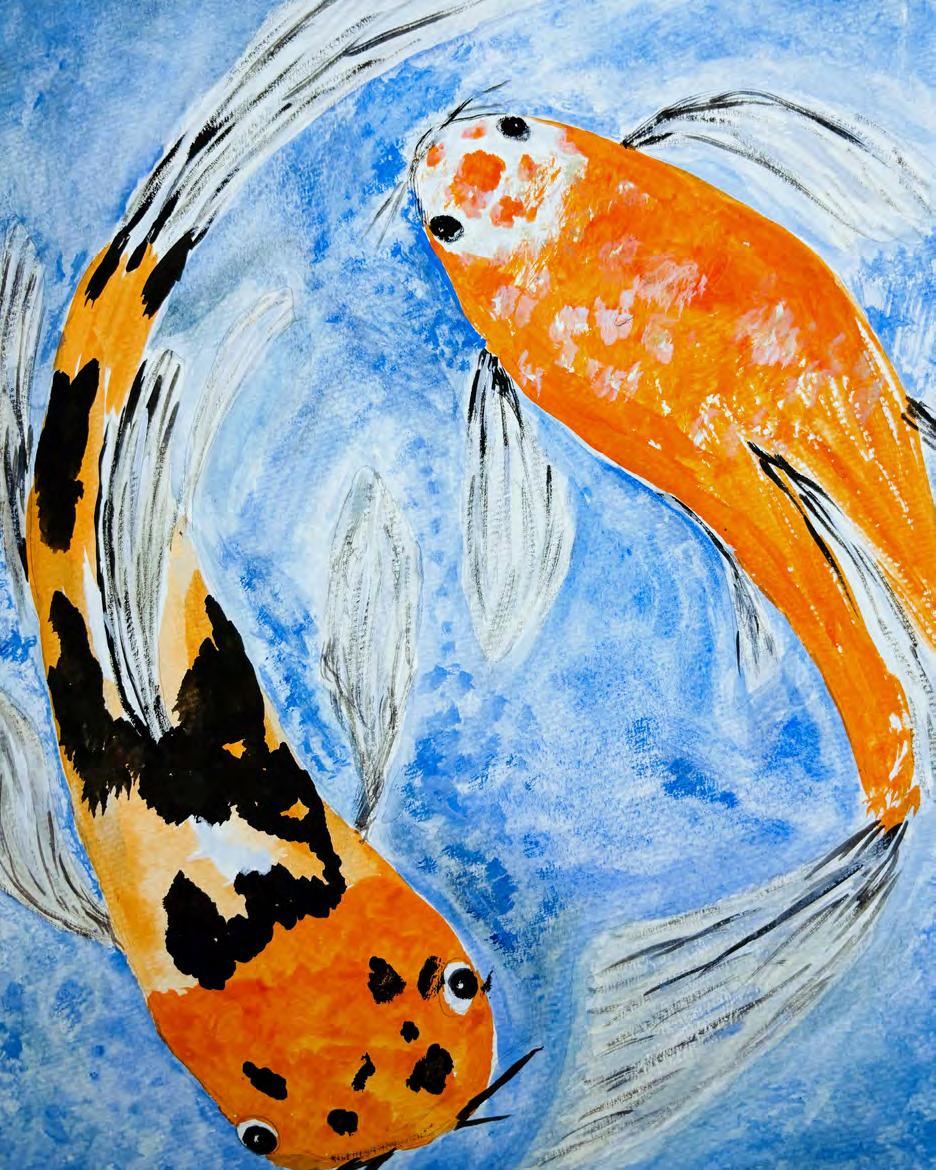

Vincent P. “Vinnyˮ, 84, of Miller Place, NY, passed peacefully on April 9, 2025. Beloved husband of Jeanette, loving father of Vincent (Falane), James (Jennifer) and David (Tina). Adored grandfather to Ryan, Lucas, Victoria, Vincent, Lindsey, J.D. and Samantha. Cherished great-grandfather of Theo and Ben. Avid aquarium hobbyist for over 60 years, President of the Long Island Aquarium Society for 10 years and treasurer of L. I. Reef Association for 20 years. Shown here with with wife Jeanette.

Vinny’s presence at aquarium events was always notable. For one thing of course, he was very tall, so you had no trouble spotting him. The other thing is that he seemed to have a smile on his face all the time. He gave you the sense that he was happy to see you. For me personally that meant that at every meeting started with a warm bear hug. And since his lovely wife Jeanette was always by his side, that meant another warm hug from her. Did I always feel special in their company? You bet I did!
Vinny’s main interest in the aquarium world was reef tanks. Over the years, Vinny kept some very large and beautiful reef aquariums. But that didn’t stop him from attending events where the primary focus was on freshwater aquariums.
The two comments you would hear the most from fellow hobbyists was that Vinny constantly showed joy in his interactions and that he was a true gentleman. Yes, there is no doubt we have lost a wonderful man and that we will greatly miss him. Jeanette and his entire family have our deepest sympathy.





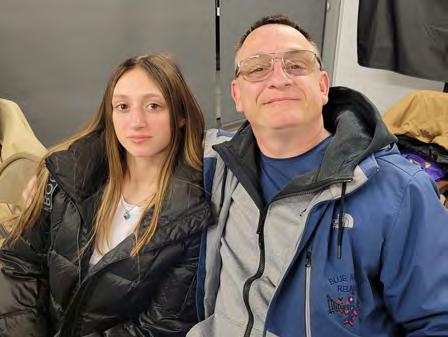




by Greater City Aquarium Society Fishy Friends
Below are photo submissions to our “Fishy Friends” Facebook group. I’ve left the subjects unnamed, but not the photographer. If you see a shot you like, and want more info, ask the photographer about it! I’m sure he or she will be delighted to tell you!
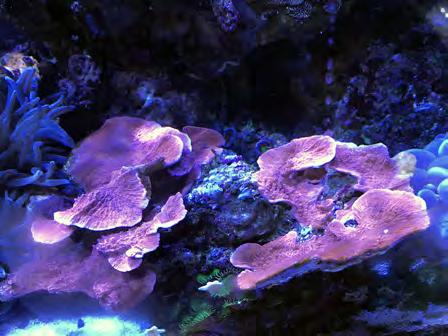





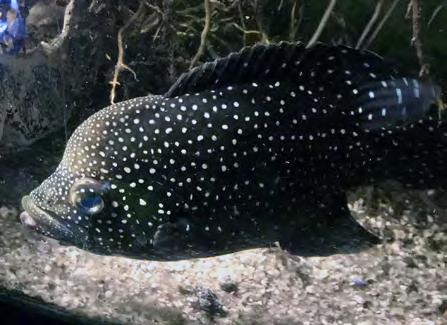


Regular readers of the Undergravel Reporter are certainly aware that researchers are regularly identifying new species of aquatic life in previously unexplored regions in the Amazon rainforest or the muddy deltas of Southeast Asia. But this month, we’re learning that even relatively urbanized parts of this country remain inadequately explored.
According to a study published last month in the journal Biology Letters, Yale researchers have identified two new species of small, colorful freshwater fish inside the Mobile River system in Central Alabama, and within the greater Birmingham metropolitan area. Both fish have speckled bodies with bright red underbellies and bright colored accents on their dorsal fins. The fish have been named the Gurley darter and the Birmingham darter and inhabit geographically limited ranges within the streams and creeks of the Mobile River drainage basin. The Birmingham darter, in fact, has been found in just two small creeks.
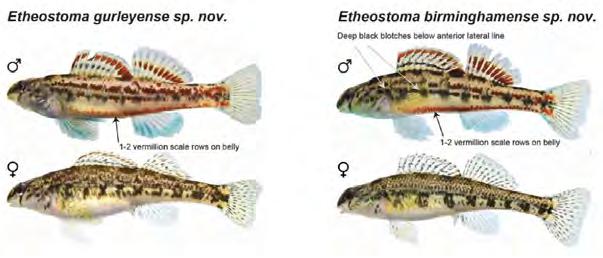
D. Brownstein, a graduate student in ecology and evolutionary biology in Yale’s Graduate School of Arts and Sciences. Mr. Brownstein described this ecosystem as “our Amazon.” His team used a combination of genomic sequencing along with an analysis of physical features to confirm that the new species of darters were indeed distinct species from the numerous other darters that inhabit the small creeks and streams within the Mobile River ecosystem. The use of a single short-form but data rich study, rather than the traditional long format scientific article, may transform the process for identifying new species. The genomic sequencing allowed researchers to confirm that several species of darter that were once lumped together as the Warrior darter were in fact genetically distinct microendemic species, and to do so with considerably less time and effort than was previously required. The Yale team’s research was motivated by a desire to protect critical endangered species at risk of extinction. As Yale Professor Thomas J. Near stated, “we can’t protect threatened species if we haven’t named and described them.” The Birmingham darter and the Gurley darter are both at risk of extinction due to water pollution, agricultural runoff, sedimentation, and habitat destruction. Due (in part) to the fact that they were only recently identified, neither is protected under the Endangered Species Act.

Sources:
Perhaps we shouldn’t be surprised by the new finds—the region is a freshwater biodiversity hotspot with the most species-rich freshwater ecosystem outside of the tropics. The lead researcher on the paper was Chase
https://news.yale.edu/2025/04/22/yalescientists-find-two-new-fish-species-alabamastreams-and-theyre-already-imperiled
https://royalsocietypublishing.org/ doi/10.1098/rsbl.2024.0652

